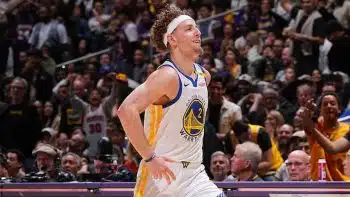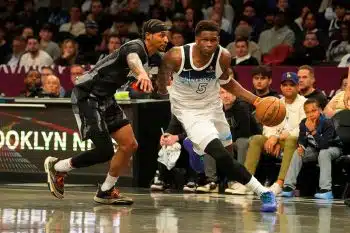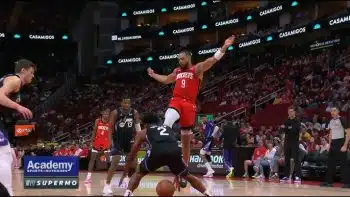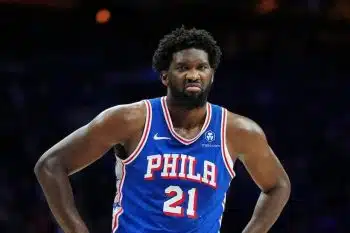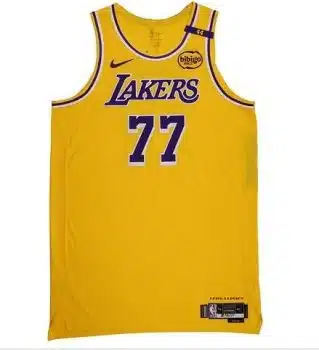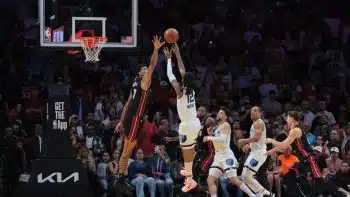NBA
Dunc’d On: Potential Goran Dragic Trade Thoughts
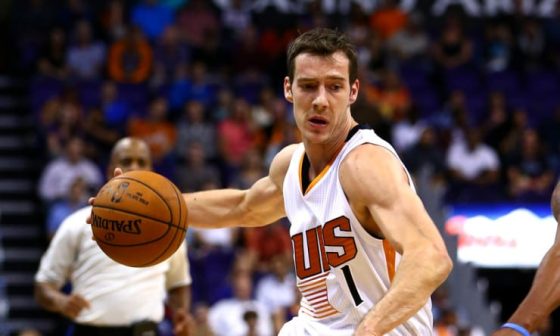
The flurry of news surrounding Goran Dragic’s trade request led to rampant speculation on his next destination. Where can he realistically end up? A number of key factors need to be considered in making that assessment.
- Dragic turns 29 in May. For him, this is almost certainly going to be his last major contract. Much like with Carmelo Anthony last summer, that means a fifth year on his deal (which would occur when he is 33 years old) and 7.5 percent annual raises is key. By this summer, Dragic will have completed his seventh year in the league, meaning he will be eligible for “30 percent” max contract since he has 7-10 years experience. Therefore, a maximum five-year deal starting at $19 million for Dragic would pay him a projected $109.5 million, with a $24.8 million salary in the fifth year. That is an enormous difference for Dragic over the four-year deal he can get if he does not re-sign with his prior team. Even with the cap going way up, nobody is paying 33-year-old Goran Dragic $24.8 million if he becomes a free agent after that fourth year in the summer of 2019.
- Dragic can only get that fifth year if he re-signs with his prior team as a Qualifying Veteran Free Agent, also known as a Full Bird free agent. That means he has to be traded to the place he wants to re-sign this season before the trade deadline to get a five-year contract. That is undoubtedly a big driver of his current trade request.
- He is not happy in Phoenix, but more importantly Phoenix is probably not going to offer him anywhere near a five-year max deal with Eric Bledsoe and Isaiah Thomas as far cheaper and younger options. What’s more, Phoenix is slated for major cap space in the summer of 2016 and is not going to want to cut into that by $20 million. As a warm weather destination with players like Markieff Morris, Bledsoe and Thomas on what will be below-market contracts by then, they can hope to do better with that $20 million in 2016 than by already having a 30-year-old Dragic on the books. Dragic and his camp probably know this, which is why getting traded now is so important.
- Being the lead ballhandler on a team seems very important to Dragic as well. That means a good fit where he would want to re-sign requires a team that does not have a lead ballhandler and would be good enough that he could win there. That is a tough order.
- A team that does not necessarily fit what Dragic is looking for role-wise is going to be in a bit of a quandary to retain him. They will be able to offer the full maximum contract with a fifth year, but Dragic very quickly is not going to be worth that much even with the rising cap. You might argue Dragic was a $20 million player last year, at age 27, but that is generally an NBA player’s best age. Nevertheless, a team that surrenders assets to trade for him and believes it is not much of a free agent destination in 2016 when the whole league will have cap space might decide, essentially, that their 2016 cap space isn’t going to use itself. Overpaying for Dragic a year ahead of time could be preferable to overpaying someone else even more in 2016, when the league will witness the best player’s market in its history.
- That said, a lot of teams that want Dragic can just sign him in free agency. This would allow them to avoid giving up assets to get him to begin with, and also avoid having to fork over the terrible fifth year on his contract because they won’t be able to offer it. If am, say, the Lakers, why would I give up assets to acquire Dragic now just so I have to give him a longer and/or more expensive contract this summer? What’s more, a team out of the playoff race would be hurt by winning more games once they get Dragic, lowering their draft pick. The Lakers seem to realize this as well, as our own Alex Kennedy reported that the Lakers aren’t likely to trade for Dragic.
- The best trade fit then, if you’re keeping score at home, is a team that doesn’t have another primary ballhandler, is good, wants Dragic to help a playoff push this year and would be willing to overpay Dragic enough in the summer in terms of money or the fifth year that he wouldn’t leave.
- Oh, and have I mentioned that team needs enough assets (and the willingness to use them) to entice Phoenix to deal as well?
- Given all of that, what is a reasonable price for Dragic? With all the complications listed above, I am guessing Phoenix will find the trade market for him softer than many anticipate. Dragic will presumably have little interest in re-signing in Boston or Houston given the presence of Marcus Smart and James Harden. They may hope to persuade him, but the uncertainty reduces what they’d be willing to give up. Sacramento can’t offer much because they already owe a future top-10 protected pick to the Bulls, and there is certainly the possibility he would want to leave given the dysfunction that organization has shown in the past. Indiana is not a great free agent destination, doesn’t have a star ballhandler and has guys like Roy Hibbert and (next year) Paul George in their primes to try to win now. It might decide to roll the dice with Dragic instead. But is a first-rounder from them enough for Phoenix? Which first-rounder, and how heavily would it be protected? One would imagine Indiana would be unwilling to include this year’s pick unless it were lottery-protected. What if they throw in Solomon Hill? The Lakers’ future picks are encumbered, and they could just sign Dragic as a free agent anyway. The Knicks are in the same boat. A first-round pick and a good prospect may end up being too much to ask for Phoenix.
- Miami is probably the best fit of all of the above, but what can they trade? They owe a top-10 protected pick to Philadelphia, so the earliest pick they can trade is two years after that is conveyed. Could that plus, say, Josh McRoberts (injured for the year, but on a good contract as a useful third big who can space, pass and defend reasonably well) be enough to top other offers? Luol Deng going back to Phoenix does not make a ton of sense since Miami wants to push for the playoffs and Deng can opt out after this season and probably should. But if he is retained, the HEAT might decide a lineup of Dragic/Wade/Deng/Bosh/Whiteside for the next two years has enough potential that they would be willing to send out as much as they can. If the HEAT get Dragic without giving up Deng and can stay healthy (dubious), they certainly help their chances of finishing outside the top-10 and conveying the pick to Philadelphia this year, meaning a pick they would send to Phoenix would be conveyed in 2017. The question is whether Phoenix gets a better offer than Miami can provide. Given the myriad uncertainties we have detailed here, it may be that they cannot.
- Whichever team gets Dragic, if he is traded, one would imagine they will not want to just drop the five-year max offer right away on July 1 since that would be such a massive overpay. That means Dragic likely will at least get to the point of talking to other teams besides his prior team as he tries to assess his market, and that increases the risk he leaves.
- Finally, some articles have mentioned the possibility of Dragic signing an extension. It is important to differentiate between signing an extension to an existing contract (preventing the player from ever reaching free agency) and re-signing with a prior team once the player reaches free agency. Dragic will not sign an extension. In fact, he is not even eligible to sign one until the third anniversary of signing his current contract in July 2012. And any extension could only offer him at most a 7.5 percent raise over the piddling $7.5 million he’s making this year. And, Dragic would have to opt into his $7.5 million player option for 2015-16 to even stay on this current contract long enough for it to be extended.
- If he’s traded at the deadline, he would be limited for six months after the trade to signing an extension for two years after the 2015-16 season, starting at only 4.5 percent higher than his previous salary because such an extension would be subject to the Carmelo Anthony rule limiting extend-and-trades. Even after six months has passed, he could only extend for three more years onto his original contract, which ends in the summer of 2016. It’s not happening, and these limitations are why premium players almost never extend under this CBA.
